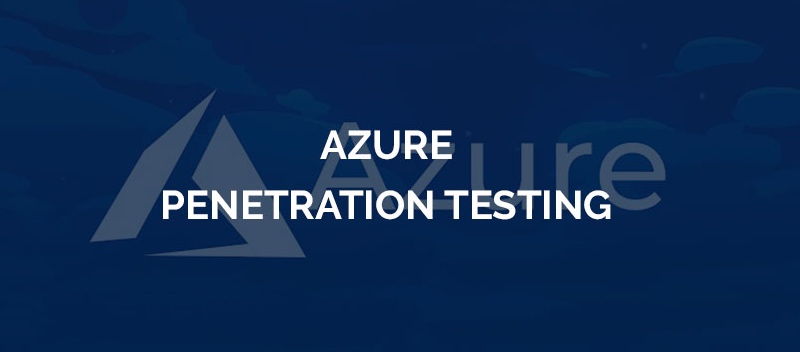Azure Penetration Testing

Are you worried about the safety of your data in the cloud? Azure penetration testing is vital to securing apps on this giant platform.
What is Azure Penetration Testing?
Azure penetration testing is a specialized field where security experts simulate cyber-attacks on Azure cloud services to identify and mitigate potential vulnerabilities. It’s a targeted approach that transcends traditional testing by factoring in the complexities of the cloud infrastructure.
Difference Between Penetration Testing and Cloud Penetration Testing
Penetration testing is like a mock attack on your systems, designed to find weaknesses before real hackers do. It checks everything from your network to your applications for security gaps.
Cloud penetration testing goes a step further. It digs into the unique world of cloud infrastructure, targeting the services and configurations specific to platforms like Azure.
In traditional penetration testing, the focus might be on onsite hardware and locally hosted servers. However, cloud penetration testing must navigate layers of cloud-based controls and compliance rules.
This involves scrutinizing not just virtual machines but also storage accounts, databases, and other resources that live in the dynamic environment of the cloud.
Security experts approach these two tests differently due to their distinct scopes and requirements. Regular pen-testing may deal more with internal networks and physical devices, while its counterpart in the cloud homes in on Internet-facing assets available anywhere there’s web access.
This shift requires testers to apply specialized techniques tailored for remote services—critical when safeguarding data against cyber threats that evolve as quickly as cloud technologies.
How Testing is Done in Azure
Testing in Azure involves simulating cyber attacks to expose and fix security issues. This process assesses the resilience of Azure applications against security threats.
- Identify the scope of testing, which may include applications, databases, and network components within your Azure environment.
- Gain authorization for the penetration test from Microsoft, following their policies to avoid legal or service interruptions.
- Use automated scanning tools and manual testing techniques to evaluate the environment for vulnerabilities thoroughly.
- Focus on standard Azure configurations and public-facing services that attackers frequently exploit.
- Evaluate the effectiveness of existing security controls and procedures to see if they correctly detect and mitigate attempted breaches.
- Document all findings from vulnerability scans and manual tests, emphasizing critical security weaknesses discovered.
- Prioritize the identified vulnerabilities based on their severity, potential impact, and the complexity of exploitation.
- Create a detailed report that lists vulnerabilities and provides clear recommendations for enhancing security practices implementation.
- Collaborate with Azure system administrators to address the reported issues and ensure that fixes are applied effectively.
For more on our penetration testing services Click Here
Best Practices for Azure Penetration Testing
Diving into Azure Penetration Testing requires a robust strategy prioritizing ethical standards and comprehensive security testing. To fortify your Azure infrastructure, familiarize yourself with the critical best practices that will guide you through a meticulous penetration testing process to bolster your cloud security posture.
Recommendations for security testing
Security assessments in Azure penetration testing are crucial to safeguarding your online environment. Following these recommendations can significantly enhance your cloud security posture.
- Prioritize your assets by risk level to focus your testing efforts effectively. Start with elements that, if compromised, could cause the most damage to your operations.
- Include Azure Active Directory (AD) in your testing scope. Given the associated security risks, assessing this service is essential for a comprehensive security review.
- Use a combination of automated and manual testing methods. While automated tools can quickly identify vulnerabilities, manual techniques provide a deeper analysis of complex security issues.
- Regularly update and patch all systems. Keeping software and services up to date reduces the likelihood of successful exploits against known vulnerabilities.
- Validate the effectiveness of your security controls. Perform tests to ensure that threat protection mechanisms like firewalls and intrusion detection systems are operating correctly.
- Conduct threat modeling for each component. Understanding potential threats enables you to anticipate attacks and strengthen defenses accordingly.
- Review compliance standards thoroughly for each test case. Adhering to regulatory requirements helps maintain legal compliance while enhancing overall security measures.
- Collaborate with stakeholders during the planning phase of penetration testing. This ensures alignment of goals, expectations, and the overall risk assessment process.
- Document all findings from vulnerability testing. Detailed reporting helps remediate issues efficiently and improves future network penetration tests.
- Test consistently after any significant change in the system architecture or deployment of new features. Continuous testing helps identify new risks introduced by these changes.
Penetration Testing Rules of Engagement
Navigating the complexities of Azure penetration testing requires a keen understanding of the rules of engagement. These guidelines ensure that security assessments on Microsoft Cloud are effective and compliant.
- Always begin with authorization from Microsoft by reviewing and acknowledging their rules for penetration testing to avoid any legal or contractual issues.
- Conduct thorough risk analysis before testing to identify potential impacts and ensure that the stability of production environments isn’t compromised.
- Utilize a well-documented attack plan following ethical hacking principles, detailing every step you intend to take during the penetration test.
- Keep communication open with your team members and any relevant stakeholders, updating them regularly on your findings and progress.
- Focus on vulnerability testing within the scope defined in the pre-test agreement to prevent unauthorized access to out-of-scope systems and data.
- Use multi-faceted toolsets for digital threat simulation, recognizing that diverse tools can uncover different types of vulnerabilities in Azure services.
- Consider red teaming approaches where appropriate, simulating real-world attacks to test Azure defenses under more realistic conditions.
- Be careful not to interrupt service availability or data integrity for other tenants sharing the cloud environment while conducting network penetration activities.
- Adhere strictly to Microsoft’s documentation outlining unified rules for conducting security audits on their cloud platforms.
- Compile a comprehensive report detailing all discovered vulnerabilities, suggested remediation steps, and an IT security assessment after completing tests.
- Ensure prompt revocation of any temporary permissions granted for testing once your evaluation concludes.
Importance of Multiple Toolsets
Having a wide range of tools at your disposal is critical for thorough Azure penetration testing. Different tools catch vulnerabilities and security gaps, providing a complete picture of an application’s weaknesses.
Using multiple toolsets can unearth issues one might miss using a single solution, allowing ethical hackers to perform extensive risk assessments and exploit testing effectively.
Moreover, diverse toolsets enable testers to simulate attack scenarios against cloud infrastructure and services. This approach ensures that cloud security is scrutinized, from network security to threat detection mechanisms within Azure environments.
It also helps in verifying the effectiveness of cybersecurity measures already in place.
Mastering Azure penetration testing requires proficiency with several tools designed specifically for this environment. With each tool geared toward identifying specific vulnerabilities or providing unique ways to test defenses, having an offensive toolkit ready expands the capability to rigorously secure applications on the Azure platform.
Next up: exploring some top Azure Penetration Testing Tools that you can incorporate into your security arsenal for robust cloud defense strategies.
Conclusion
Mastering Azure penetration testing is about constant learning and staying ahead with the best tools and practices. Keep your skills sharp, embrace new methodologies, and leverage cutting-edge tools to uncover vulnerabilities.
Your efforts will reinforce the security of Azure environments, making them resilient against potential threats. Stay proactive in your testing strategies to safeguard cloud-based applications effectively.
Remember, a robust defense starts with a thorough offense in cybersecurity. Contact our penetration testing experts for a free consultation!




